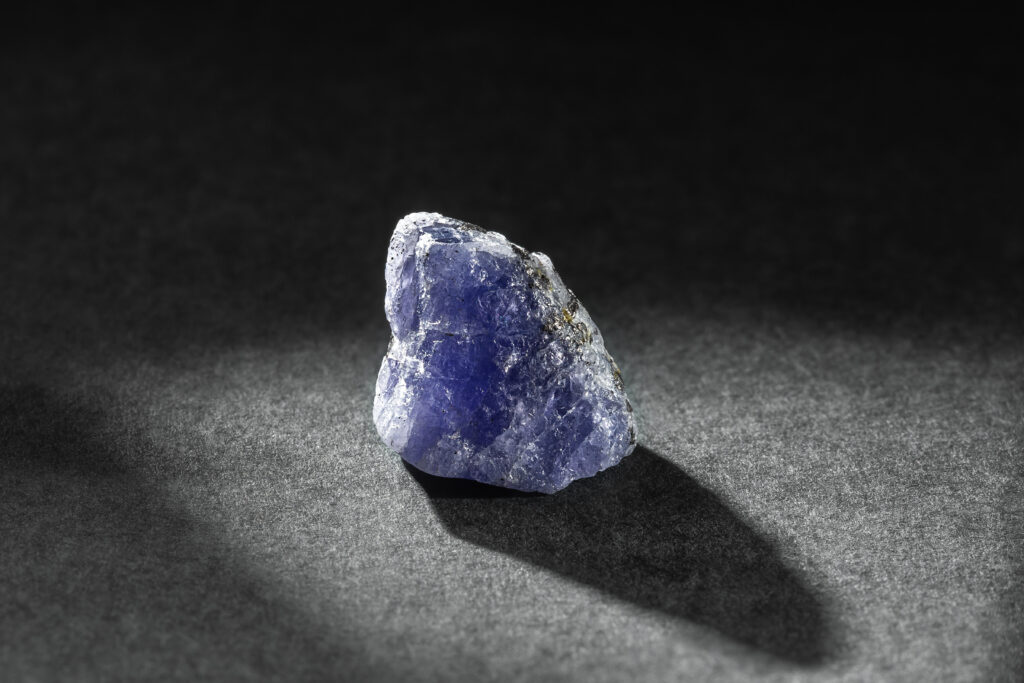The History of Tanzanite and its Enigmatic Journey
In the heart of East Africa, beneath the towering peaks of Mount Kilimanjaro, lies a treasure of mesmerizing beauty and rare allure – tanzanite. This vibrant gemstone, with its captivating shades of blue and purple, holds within its depths a rich history that is as mysterious and captivating as the gem itself. From its discovery to its association with Tiffany & Co., the tale of tanzanite is one of geological wonder and human fascination.

Discovery of Tanzanite: A Serendipitous Encounter with Nature’s Artistry
The story of tanzanite began in the 1960s when a Tanzanian Maasai tribesman named Ali Juuyawatu made a serendipitous discovery near the foothills of Mount Kilimanjaro. While searching for valuable sapphire and ruby, Ali stumbled upon a collection of uniquely colored crystals. These crystals, later identified as zoisite, possessed an ethereal blend of blue and violet that seemed to change with the angle of the light.
At first, the gemstone remained relatively unknown to the outside world. It wasn’t until a prospector named Manuel d’Souza, who was entranced by the stone’s beauty, realized its potential as a new and exciting gemstone. He introduced the gem to Henry Platt, the vice president of Tiffany & Co., who recognized its uniqueness and named it “tanzanite” in honor of its country of origin.
The Role of Tiffany & Co.: Tanzanite’s Journey into the Limelight
Tiffany & Co. played a pivotal role in bringing tanzanite to the global stage. The gemstone’s brilliant blue-violet hues aligned perfectly with the luxurious yet modern aesthetic that Tiffany & Co. sought to promote. The company introduced tanzanite in their 1968 Christmas catalog, accompanied by the tagline “Tanzanite, the most beautiful blue stone to be discovered in 2000 years.” This marketing strategy not only emphasized the rarity of tanzanite but also positioned it as a truly exceptional gem.
The efforts of Tiffany & Co. did not stop at marketing. The company worked diligently to educate both the gem industry and consumers about tanzanite, its unique characteristics, and its country of origin. This educational initiative further enhanced the gem’s desirability and solidified its place in the world of fine jewelry.

Geological Marvel: The Science Behind Tanzanite’s Mesmerizing Hues
Tanzanite owes its breathtaking colors to a phenomenon known as pleochroism. This property causes the gem to display different colors when viewed from different angles. The stone’s blue hue is especially pronounced when viewed from one direction, while its violet shade dominates from another angle. This dynamic interplay of colors contributes to tanzanite’s enigmatic allure, making it a favorite among gem enthusiasts and collectors.
Tanzanite’s coloration is also a result of the presence of vanadium, a trace element within the stone’s mineral structure. The specific geological conditions in the Merelani Hills region of Tanzania, including heat and pressure from tectonic activity, played a crucial role in forming tanzanite’s unique properties.
Tanzanite’s Enduring Appeal: A Gem of Exclusivity and Elegance
Tanzanite continues to captivate hearts and minds around the world. Its rarity, coupled with the enchanting play of colors, makes it a sought-after gem for collectors and jewelry connoisseurs. The gem’s limited supply – found only in a small area of Tanzania – adds to its exclusivity and allure.
The journey of tanzanite from a chance discovery to a celebrated gemstone highlights the beauty of human curiosity, nature’s hidden treasures, and the power of collaboration between cultures. As we admire the radiant blues and purples of tanzanite in jewelry displays and collections, let us remember the remarkable journey that brought this gemstone from the foothills of Mount Kilimanjaro to the global stage.
In the ever-evolving tapestry of our world’s history, tanzanite stands as a testament to the enduring allure of nature’s marvels and the human spirit’s unquenchable thirst for beauty.